#aluminium scale
Explore tagged Tumblr posts
Text

Clare Woods
The Midnight Shop. 2021-22
#clare woods#art on aluminium#abstract figurative#loose brushwork#large scale art#women artists#bristish artist
14 notes
·
View notes
Text
I forgot how much I hate working with aluminium.
#I tried to figure out something large scale right away for like half an hour#Then I decided you know what#Let's just make a smol bbys first aluminium producer#Just so I can get the sheets and casings needed to upgrade my power production#Getting turbofuel going is going to be an experience#Satisfactory#Lini plays satisfactory
4 notes
·
View notes
Text
"Swedish battery maker Northvolt has developed a new sodium-ion cell technology and could ramp up production of batteries in the next few years. The demand for critical minerals such as lithium, cobalt and platinum has surged in recent years as electric vehicles (EV) become increasingly popular, prompting car manufacturers and battery makers to look for alternatives. Northvolt’s sodium-ion batteries do not contain lithium, cobalt and platinum, which can pose cost and environmental challenges."
"The researchers have developed a recycling method that allows recovery of 100 per cent of the aluminium and 98 per cent of the lithium in electric car batteries. Swedish researchers say they have developed a new, more efficient way of recycling electric car batteries. The method allows for the recovery of far more valuable metals found in EV batteries. The process does not require the use of expensive or harmful chemicals either, the scientists say. “As the method can be scaled up, we hope it can be used in industry in future years,” says research leader Martina Petranikova"
Not exactly related to good manners, but some good news I heard today that I was too excited about not to share.
There's been quite a few technological breakthroughs recently that could make electric car batteries, and just batteries in general, more environmentally friendly, more ethical, and more sustainable.
183 notes
·
View notes
Photo
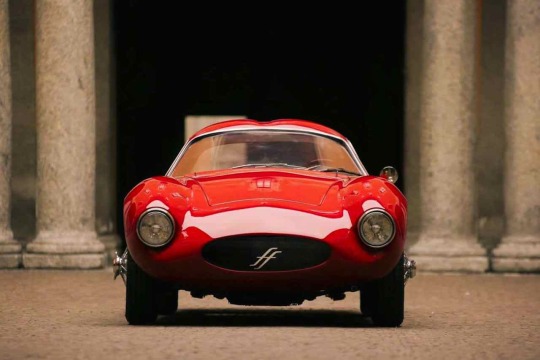
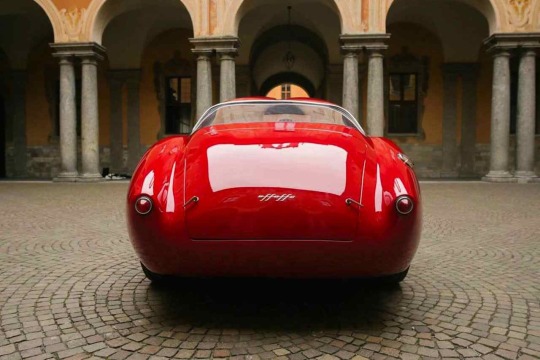
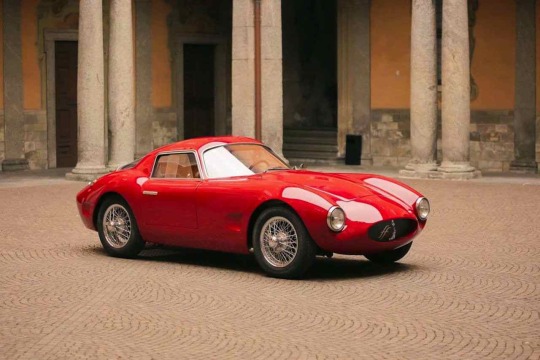
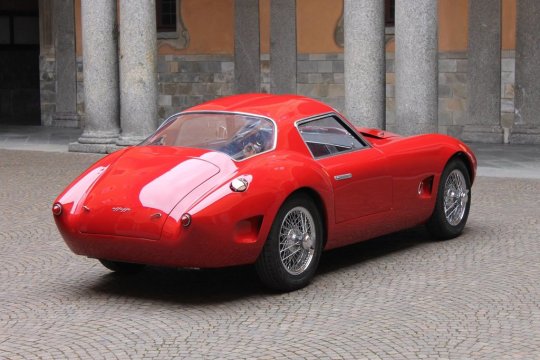


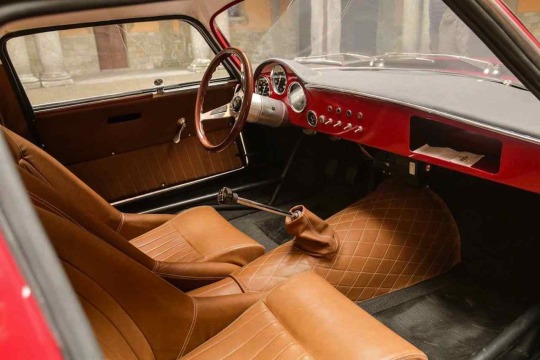

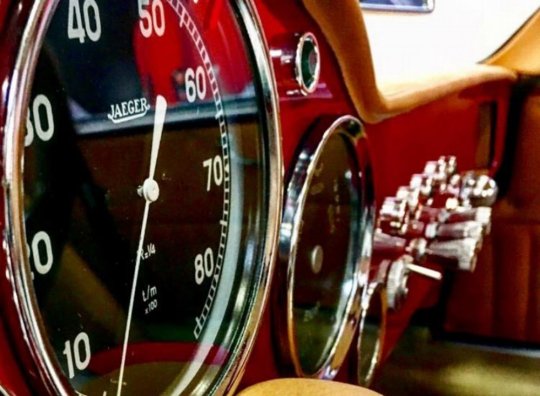

Effeffe Berlinetta
Berlinetta is a name of the past, a name that conjures up a very specific type of car: a high-performing sports car with closed bodywork, a 2-seater (or 2+2 at most). The name Berlinetta embodies all the philosophy of the first car made by Effeffe. A car built today in exactly the same way as craftsmen moulded the famous GTs in the late 1950s: the mechanics borrowed from the series and redesigned to suit new needs, a hand-made chassis and bodywork. All starting from a blank sheet. An original car with a strong personality, in form and in deed, which is the best possible homage to the skill of these craftsmen. A generation we have perhaps forgotten, that offered the Italian car tradition - and the history of motoring generally - plenty in terms of uniqueness, charm and design. A product built and finished by hand, like in the past, with a tubular chassis, hand-beaten aluminium bodywork and wire wheels, seeking to guess and please the taste of the owner, expressing a timeless character.
The Berlinetta prototype was born in 2014, little more than a scale model. Made and finished, but not running: the mechanics are approximate, and it has never really been fine-tuned. But it is beautiful. An authentic time-machine. It seems as if it has just been found in a hay barn and dusted down. In addition, being practically a style model, its lines are pure and smooth, not “dirtied” by license plates or indicators. So beautiful, in fact, that, almost as a game, the Frigerio brothers sent a few photos to the people in charge of the Concorso di Eleganza di Villa d’Este. And, a surprise, they sent an invitation to present the Berlinetta in the Concept Cars category. A dream within a dream, the self-built car made its début and the world’s most prestigious and glamorous elegance competition.
Along with the interest and pleasure shown immediately by the public and the media, this would have gone to anyone’s head. But as we know, the Frigerio brothers aren’t the sort of people who sit on their laurels, and they decided the play another chip. They realised that their idea could become something more than just an adventure, and decided to exploit their years of relationships, acquaintances, friendships and skill to set up a workshop to produce the Berlinetta in small series. An exclusive, tailored and fully customisable product. Built as in the past by a handful of old craftsmen wanting to get back in the game, but with the help of the best technologies available today.
The lines of the Berlinetta need no explanation. They are a well-balanced mix of classic, late-50s stylistic elements, from the muscular bumpers to the oval grille, a hint of rear fins and the double bubble roof. The definition of the lines of the car talks of an approach that is about as poetically anachronistic as you can get. The Frigerio brothers started by placing the mechanics and seats on the floor, tracing the basic outline around them with chalk, then gradually building the chassis, welding, cutting and welding again. Following the curves of the tubular metal frame, they then moved onto the bodywork, beaten entirely by hand in aluminium according to the artisanal sensitivity of Vittorio, who has a good hand, assisted by a few panel beaters with forty years’ experience. And from there, the project moved on in a kind of reverse engineering, working backwards by making 3D scans of the shapes to produce the drawings and designs.
Style and proportions have that instantly recognisable Italian flair, as does the passenger compartment, entirely leather-lined with a dashboard painted in the same colour as the car, and the Alfa Romeo-derived mechanics. Who, working according to the Fia Gr2 specifications of the 1971 European Touring challenge, they were able to achieve around 200 HP at 6800 rpm, with maximum torque of around 30 Kg/m at 4400 rpm, on the road with no technological support.
225 notes
·
View notes
Text
something something eggman sets up a recycling centre/scheme for aluminium cans, really makes it look legitimate and eco friendly, but uses it all to build his badniks (the less powerful one, ones he produces on a mass scale). Amy is the one who figures it out because suddenly the recycling centre she used to go to for bottles and cans in station square was forced to shut down, forcing everyone to go to the new one instead, and the vibes of the new one is WRONG!!
29 notes
·
View notes
Text
My friend loved his wings.
At playschool, he'd used cardboard and string to create an enormous pair of wings, but he'd never wanted to fly. All he wanted to do was use them to blow air around.
As he grew up, his resources expanded and he made many new sets, with great cantilevered bones, silk feathers. Aluminium to carbon steel, his ambitions got grander and grander, but all he ever wanted to do was waft. A great person to have around in the summer, his continual light breeze was a joy on a sunny day.
He found consistent employment hard, to begin with, due to his obsession with bringing his hobby to work with him. After a disastrous week temping at a packing peanuts factory, a friend put him in touch with a new place that made and painted ping-pong balls.
They loved him.
He became an integral part of the factory process, herding pingpong balls through the production process, delicately providing zephyrs to guide them into the painting areas, gently drifting them through packaging, herding thousands at a time with his mighty wings, softly driving air around to his best advantage.
After a few years of doing this, the factory was doing so well they needed to expand production, but nobody else could do the same thing at the scale they needed, so they reluctantly replaced my friend with large mechanical drivers, which he helped to design and build. The company had done so well for my friend that his stock options and severance package means he'll never have to work again.
On the day he left the company, he undid the straps that held his latest wings to his shoulders, detached the belts that attached them to his arms, and carefully folded them back into their packing case, never to pick them up again.
A few days later, I invited him to a concert for a band I liked.
But he wasn't a fan.
17 notes
·
View notes
Text











On July 2nd 1971 The Erskine bridge was officially opened.
Construction on the project began in April 1967 at a cost of £10.5m, which is the equivalent of almost £150m today.
The bridge was designed by Freeman Fox & Partners for the Erskine Bridge Joint Committee. Dr Oleg Kerensky was the partner in charge and the chief design engineer was Dr William Brown under the supervision of Sir Gilbert Roberts. The piers and foundations were designed by W. A. Fairhurst & Partners. The consultant architect was R. E. Slater.
The central span is 305m (1000ft) flanked by anchor spans of 110m each. The total length including approach spans is 1322m. The aerofoil box-girder deck is supported by fourteen diamond-plan, single-shaft concrete piers at a maximum height of 45m above the river. Two central pylons extend 38m above the level of the deck. A 6x4 cluster of galvanized steel cables passes over the saddle of each pylon in a centralised, single plane.
The dual carriageway has cycle lanes and footpaths with metal safety barriers, renewed in 2012. The underside of the deck carries four water mains pipes and two gas pipes. In 2017 the cables were painted and aluminium lighting columns were installed.
The Bridge was a state-of-the-art infrastructure landmark in Scotland for its time and remains one of the country's most architecturally and technically distinguished bridges of the post-war period and beyond its date of construction. It is the first example of a large-scale cable-stayed bridge in Scotland and is recognised for its structural simplicity, economy of materials and slender appearance.
It was designed and built during a period of substantial development in civil engineering and road infrastructure. It illustrates the aspirations for economic and social progress in Scottish society and is directly associated with the period of ambitious transformation of Scotland's modern infrastructure during the 1960s.
The Erskine Bridge is one of only three road bridges in Scotland with a main span exceeding 300 metres. Its minimalistic single-cable design remains exceptionally rare for large-scale road bridges. On completion, the Erskine Bridge is understood to have had the longest span of this type in the world. The appearance of many bridges on this scale have been altered by later alteration and engineering works. The largely unchanged appearance of the Erskine Bridge contributes to its special interest.
Some of these pics I unearthed are brilliant, my faves are, probably the first person to cross the bridge, no health and safety back then, and the photo with the PS Waverley passing by during construction.
20 notes
·
View notes
Text
EPIC RAP BATTLES OF HISTORY! TERUNOSUKE MIYAMOTO VERSUS DIAVOLO! BEGIN!
[Terunosuke verse one] Oh, who are you?
i don't think we've met before.
do you think i'm going to hurt you?
Oh, please. Flatter me some more.
A pale middle aged man, paranoid and far from winsome
Ah, I remember. You're the..."Emperor crimson"
An ever suffering mob boss who's confidence often falters and who offloads all his work onto teenagers and his alters--
Yet you want them to exalt you! don't you think that's kinda odd?
The contrived way you speak implies you're aiming for applause. And now you live through constant deaths with very little pause.
Did I get anything wrong?
[Diavolo verse one]
First of all, I should kill you on the spot.
Men have been disembowled for less info than you've got. You're exceedingly arrogant; I doubt you can stop yourself
but your words come out quite muffled when you're speaking from a shelf.
At least i have a past to hide, though my claim to fame is shame
Because your claim to fame is waiting 5 years to get a name
No, it's not your fate, that's not unique within your part.
people hardly remember you cause you're not out in the park,
When it's just results that matter, you're inconsequential filler, i can skip time just once in your arc and see who is the winner.
[teru verse two]
Are those the best verses you have? I think you're just stating facts.
You only speak the obvious in your low-hitting jabs.
A 15 year old beat you.
My fate took thrice the cavalry. In power scaling terms that means that you, the "king" are under me.
And that's why i can tell from your eyes that you're deathly afraid, you see.
[Diavolo cuts him off]
That teenager had requiem. A power that should have been mine. I was at my apex, everything should have been fine.
The same cannot be said for you. From panel one, you were always screwed.
Your prowess was at sea level when you paid your dues.
You're utterly ineffective, didn't lay a scratch on anyone. I'm suprised you haven't left yet-oh wait, you've got no legs to run!
and yet you still yap on and on, through a mouth that should be gone,
When you totally failed at being even a pawn.
You're broken, "enigma boy", no backstory to destroy,
And don’t complain to me, you know your obscurity is what i most enjoy.
[Terunosuke, now pissed, steps out of the book.]
I disagree. I'm sick of this. You think i should be calm and quiet?
Well, look what i can do while still being canon compliant!
[he pulls out an aluminium baseball bat and whacks diavolo in the face, killing him.]
WHO WON WHOS NEXT YOU DECIDE!
#Jjba#jjba diu#diamond is unbreakable#jjba Va#vento aureo#terunosuke miyamoto#jjba diavolo#diavolo#shitpost#I hope this is in character
15 notes
·
View notes
Text
Researchers at Swansea University, in collaboration with Wuhan University of Technology, Shenzhen University, have developed a pioneering technique for producing large-scale graphene current collectors. This breakthrough promises to significantly enhance the safety and performance of lithium-ion batteries (LIBs), addressing a critical challenge in energy storage technology. Published in Nature Chemical Engineering, the study details the first successful protocol for fabricating defect-free graphene foils on a commercial scale. These foils offer extraordinary thermal conductivity -- up to 1,400.8 W m-1 K-1 -- nearly ten times higher than traditional copper and aluminium current collectors used in LIBs.
Read more.
14 notes
·
View notes
Text
Restlessly, Gajeel ran his fingers over the ground. Deep down in the rock he could feel traces of ore, but it was more a whisper than a call. Aluminium, probably. Or nickel.
He sighed. It had been ages since he had last eaten raw iron, unsmelted, freshly broken from the intestines of the earth. A taste that evoked memories from a time when things had been easy and full of wonder. His thoughts digressed...
"C'mon, eat already. Yer crammin' down all kinds of stuff all the time."
The boy weighs the grey-black lump in his scratched hand, pulling a face.
"You can't eat rocks."
With an indignant snorting, the dragon gives the boy a mighty slap on the back of his head, thus making him tip forward, lengthways into the dust.
"Moron! Tha's not a rock, it's hematite. Iron ore. Eat."
The kid gets back up, defiantly crossing his arms but without letting go of the rock.
"But you can't eat iron either!"
"Yes, we can, you and I. 'S nothin' better. Now, try!"
To prove his point, the dragon bites a clashing hole into the rock wall, which is covered in reddish brown sediment, and crunches the ore with delight. The rumbling and tumbling from his mouth sounds like a debris avalanche thundering down the slope towards them, but the boy is not afraid.
He turns the nugget to and fro. Eating dirt is something he doesn't mind. The villagers' wastes were always dirty. And sometimes, when his hunger had been unbearable and there had been nothing edible to be found, he had chewed on leaves and twigs from the forest floor or nibbled on tree barks like a deer.
Now there is always plenty of food. Real food. The dragon takes care of that.
Doubtfully, he lifts the lump and sinks his teeth into it.
The raw ore crunches in his mouth like sand, the brittle crumbs scratch his tongue.
But it tastes good. Warm and bloody and sweet like the meat of a freshly killed animal.
Never in his life has he eaten something so amazing.
He craves more.
More.
Greedily, he wolfs down the pieces of ore the chuckling dragon keeps knocking out of the rock wall for him, chews and gulps, gulps an chews as if he were starving.
Small chips tear open his palate and throat. His stomach burns, but he can't stop eating. Rusty saliva is dripping from the corners of his mouth.
And then the iron starts to sing in his veins. The force within him, which he can now call all by himself, shouts its jubilant response as if it had already waited for the iron to come. Magic, the dragon said, not some devilish power. It bubbles up like a geyser, roars through his blood like a waterfall until he's all dizzy.
The skin on his bare arms begins to prickle as iron scales burst out from it. His legs, his face, his ribcage under the ragged tunic. Everything turns into iron. But not cold and rigid. Flexible and warm and hard like the dragon's hide, the dragon who is so strong and invulnerable.
He wonders, might he be as strong as the dragon now, too?
He grabs the nearest chunk of hematite with both hands and breaks it apart as easily as if it were but a piece of bread. The boy beams all over his face.
Next to him, the dragon bursts out into a booming laughter until little pieces of gravel drizzle down the rock wall, a garnet ember sparkling in his dark eyes. His huge paw slams the boy against his armoured chest, but this time, the tough hug hardly hurts.
"Hah! Tha's my brat!"
And suddenly the boy understands: the dragon is proud of him. For the first time in his life, somebody is proud of him.
Now he wants to eat even more iron.
#fairy tail#gajeel redfox#metalicana#dragon style parenting#fanfiction#eatyouriron#random snippet#fairy tail 9 months quest
22 notes
·
View notes
Text
THE MOORS By: Dr. Leroy Vaughn, MD, MBA. A Dynamic, Honest and Powerful View of Black History.
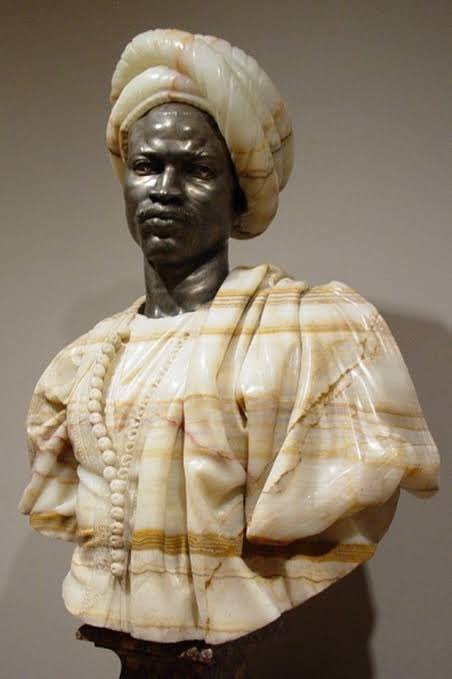
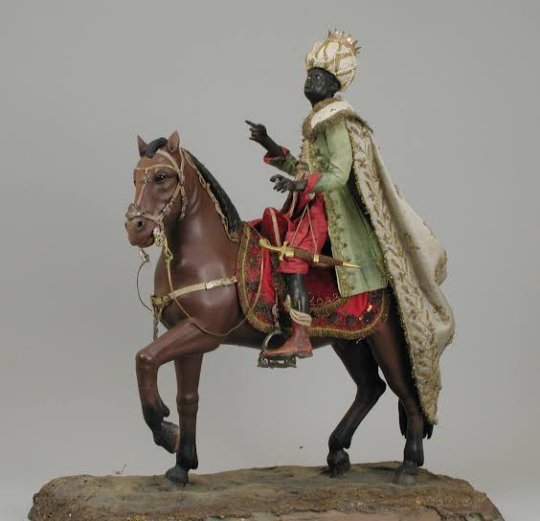


During the European Dark Ages, between the 7th and 14th century AD, the Moorish Empire in Spain became one of the world's finest civilizations. General Tarik and his Black Moorish army from Morocco, conquered Spain after a week-long battle with King Roderick in 711 AD. (The word tariff and the Rock of Gibraltar were named after him). They found that Europe, with the assistance of the Catholic Church, had returned almost to complete barbarism. The population was 90% illiterate and had lost all of the civilizing principles that were passed on by the ancient Greeks and Romans. The Moors reintroduced mathematics, medicine, agriculture, and the physical sciences. Arabic figures including the zero and the decimal point replaced the clumsy Roman numerals. As Dr. Van Sertima says, "You can't do higher mathematics with Roman numerals." The Moors introduced agriculture to Europe including cotton, rice, sugar cane, dates, ginger, lemons, and strawberries. They also taught them how to store grain for up to 100 years and built underground grain silos. They established a world-famous silk industry in Spain. The Moorish achievement in hydraulic engineering was outstanding. They constructed an aqueduct, that conveyed water from the mountains to the city through lead pipes from the mountains to the city. They taught them how to mine for minerals on a large scale, including copper, gold, silver, tin, lead, and aluminium. Spain soon became the world centre for high-quality sword blades and shields. Spain was eventually manufacturing up to 12,000 blades and shields per year. Spanish craft and woollen became world famous. The Moorish craftsman also produced world-class glass, pottery, vases, mosaics, and jewellery. The Moors introduced to Europe paved, lighted streets with raised sidewalks for pedestrians, flanked by uninterrupted rows of buildings. Paved and lighted streets did not appear in London or Paris for centuries. They constructed thousands of public markets and mills in each city. Cordova alone had 5,000 of each. They were also introduced to Spain's underwear and bathing with soap. Their public baths numbered in the thousands when bathing in the rest of Europe was frowned upon as a diabolical custom to be avoided by all good Christians. Poor hygiene contributed to the plagues in the rest of Europe. Moorish monarchs dwelled in sumptuous palaces while the crowned heads of England, France, and Germany lived in barns, lacking windows, toilets, and chimneys, with only a hole in the roof as the exit for smoke. Human waste material was thrown in the streets since no bathrooms were present. Education was made mandatory by the Moors, while 90% of Europe was illiterate, including the kings and queens. The Moors introduced public libraries to Europe with 600,000 books in Cordova alone. They established 17 outstanding universities in Spain. Since Africa is a matriarchal society, women were also encouraged to devote themselves to serious study, and it was only in Spain that one could find female doctors, lawyers, and scientists. Moorish schoolteachers knew that the world was round and taught geography from a globe. They produced expert maps with all sea and land routes accurately located with respect to latitude and longitude; while also introducing compasses to Europe. They were such expert shipbuilders that they were able to use their geography expertise to import and export as far away as India and China. It was not by accident that a Moor named Pietro Olonzo Nino was the chief navigator for Christopher Columbus on the flagship Santa Maria. He is said to have argued with Columbus as to who really discovered America. One of the worst mistakes the Moors made was to introduce gunpowder technology from China into Europe because their enemies adopted this weapon and used it to drive them out of Spain. #Africa
28 notes
·
View notes
Text
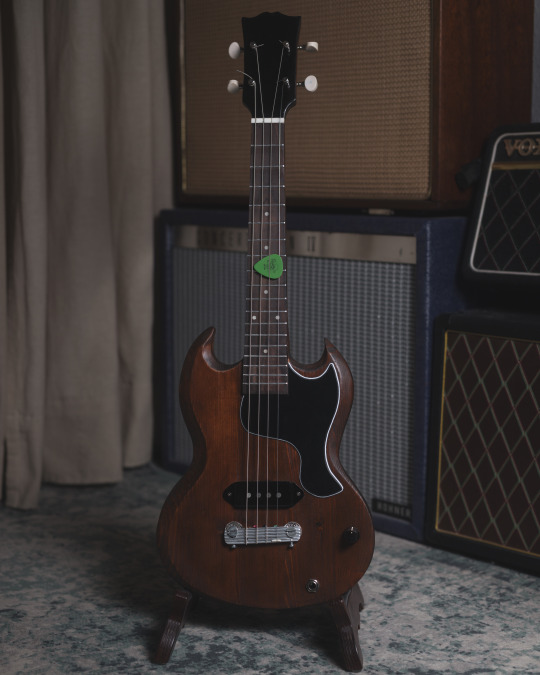
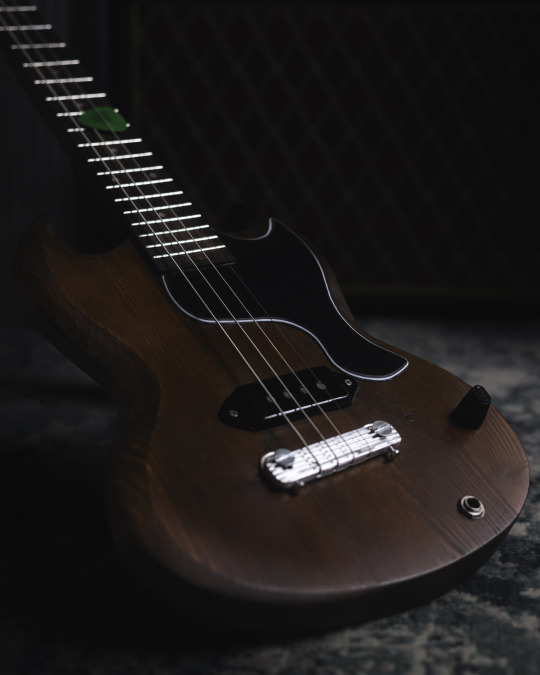


I built this small guitar/ukulele for fun.
The neck-trough design was sculped from a single slab of pine, dyed and finished with teak oil.
The pickup cover, wraparound tailpiece and pickguard were handmade. The tailpiece was made from a block of aluminium from a power supply heatsink. I left some of the grooves to position the F string saddle.
It has a 17" scale, and uses standard guitar strings. I tuned it to G, C, F, A#. It is the same as the four upper strings of a standard guitar with a capo at the 3rd fret. This way I can play some power chords on it.
8 notes
·
View notes
Note
can you guys chill lmao. just trying to help
Sapphire is a precious gemstone, a variety of the mineral corundum, consisting of aluminium oxide (α-Al2O3) with trace amounts of elements such as iron, titanium, cobalt, lead, chromium, vanadium, magnesium, boron, and silicon. The name sapphire is derived from the Latin word sapphirus, itself from the Greek word sappheiros (σάπφειρος), which referred to lapis lazuli. It is typically blue, but natural "fancy" sapphires also occur in yellow, purple, orange, and green colors; "parti sapphires" show two or more colors. Red corundum stones also occur, but are called rubies rather than sapphires. Pink-colored corundum may be classified either as ruby or sapphire depending on locale. Commonly, natural sapphires are cut and polished into gemstones and worn in jewelry. They also may be created synthetically in laboratories for industrial or decorative purposes in large crystal boules. Because of the remarkable hardness of sapphires – 9 on the Mohs scale (the third hardest mineral, after diamond at 10 and moissanite at 9.5) – sapphires are also used in some non-ornamental applications, such as infrared optical components, high-durability windows, wristwatch crystals and movement bearings, and very thin electronic wafers, which are used as the insulating substrates of special-purpose solid-state electronics such as integrated circuits and GaN-based blue LEDs. Sapphire is the birthstone for September and the gem of the 45th anniversary. A sapphire jubilee occurs after 65 years.
Sapphire is one of the two gem-varieties of corundum, the other being ruby (defined as corundum in a shade of red). Although blue is the best-known sapphire color, they occur in other colors, including gray and black, and also can be colorless. A pinkish orange variety of sapphire is called padparadscha.
Significant sapphire deposits are found in Australia, Afghanistan, Cambodia, Cameroon, China (Shandong), Colombia, Ethiopia, India Jammu and Kashmir (Padder, Kishtwar), Kenya, Laos, Madagascar, Malawi, Mozambique, Myanmar (Burma), Nigeria, Rwanda, Sri Lanka, Tanzania, Thailand, United States (Montana) and Vietnam. Sapphire and rubies are often found in the same geographical settings, but they generally have different geological formations. For example, both ruby and sapphire are found in Myanmar's Mogok Stone Tract, but the rubies form in marble, while the sapphire forms in granitic pegmatites or corundum syenites.
Every sapphire mine produces a wide range of quality, and origin is not a guarantee of quality. For sapphire, Jammu and Kashmir receives the highest premium, although Burma, Sri Lanka, and Madagascar also produce large quantities of fine quality gems.
The cost of natural sapphires varies depending on their color, clarity, size, cut, and overall quality. Sapphires that are completely untreated are worth far more than those that have been treated. Geographical origin also has a major impact on price. For most gems of one carat or more, an independent report from a respected laboratory such as GIA, Lotus Gemology, or SSEF, is often required by buyers before they will make a purchase.
9 notes
·
View notes
Text
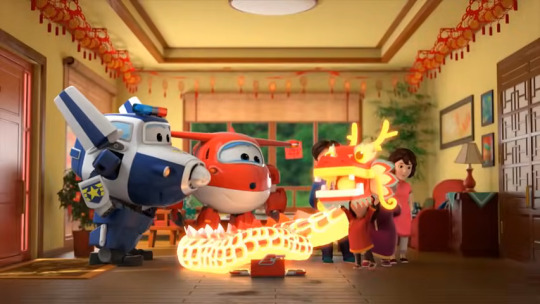
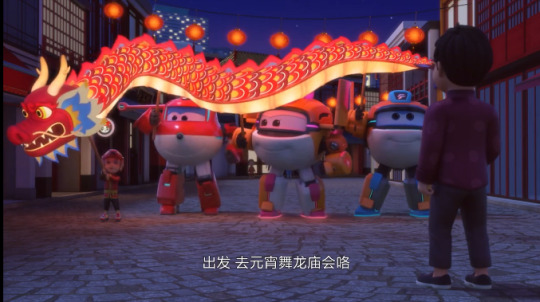
Traditions and Events: The Dragon Dance - China
The Dragon Dance (local name being 舞龍, or wǔ lóng) is a traditionnal and ancient performal dance practiced in Chinese culture, as the same way as the Lion Dance (more infos about it there), it is more often see during festivities, like the Lunar New Year. This dance is performed by a team of expert dancers, manipulating a giant dragon figure, the dance team simulates the imagined movements of this river spirit in a sinuous, undulating manner.
The dragon dance is, as said earlier, often performed during Chinese New Year. Chinese dragon is an important symbol of China's culture, and they are believed to bring good luck to people, therefore the longer the dragon is in the dance, the more luck it will bring to the community. The dragons are believed to possess qualities that include great power, dignity, fertility, wisdom and auspiciousness. The appearance of a dragon is both fearsome and bold but it has a benevolent disposition, and it was an emblem to represent imperial authority. The movements in a performance traditionally symbolize the power and dignity of the dragon.
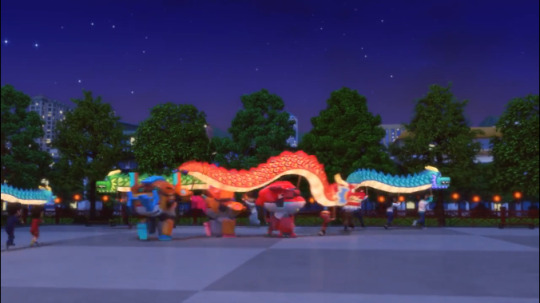
The origin of the Dragon Dance was most set during the Han Dynasty, were multiples texts described different form of dances, mostly associated with rain. According to a Han dynasty texts, these rituals was made to call two dragon deities: Yinglong and Shenlong, who each one bring rain and wind for the people.
There is also others form of dances involving these creatures, more as a popular and entertainment form. One of theses examples is the Baixi (百戲), when there are dancers called "mime people" dressed up as various creatures, including the dragon, and also a fish-dragon creature, mentionned in those dances. However, theses Ancient dances does not reflect the modern dragon Dance, stated in the illustration stones from the Han period.
Objects like dragon lanterns (龍燈) and figures are also disposed for the dance preparations, the lanterns are carried long the path the dance is mostly held.
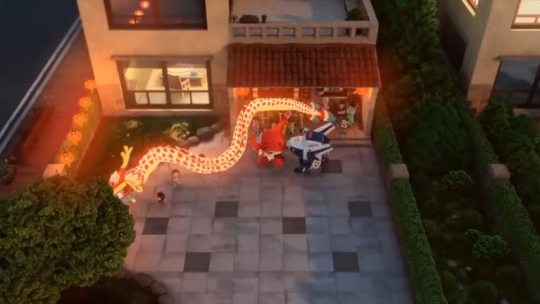
The dragon is a long serpentine body formed of a number of sections on poles, with a dragon head and a tail. It is assembled by joining the series of hoops on each section and attaching the ornamental head and tail pieces at the ends. Traditionally, dragons were constructed of wood, with bamboo hoops on the inside and covered with a rich fabric, however in the modern era lighter materials such as aluminium and plastics have replaced the wood and heavy material.
The normal length and size of the body recommended for the dragon is 34 metres (110 ft) and is divided into nine major sections. The distance of each minor (rib-like) section is 35 cm (14 in) apart; therefore, the body has 81 rings. Many may also be up to 15 sections long, and some dragons are as long as 46 sections. Occasionally, dragons with far more sections may be constructed in Chinese communities around the world to produce the longest dragon possible, since part of the myth of the dragon is that the longer the creature, the more luck it will bring.
Historically the dragon dance may be performed in a variety of ways with different types and colours of dragon. Green is sometimes selected as a main colour of the dragon, which symbolizes a great harvest. Other colours include: yellow, symbolizing the solemn empire; gold or silver, symbolizing prosperity; red, representing excitement. The dragon's scales and tail are mostly beautiful silvery and glittery to create a joyous atmosphere.
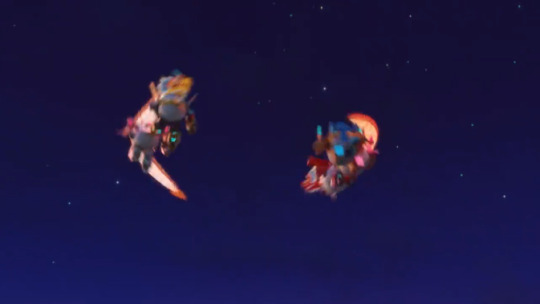
The dragon dance is performed by a skilled team whose job is to bring the motionless puppet body to life. The correct combination and proper timing of the different parts of the dragon are very important to make a successful dance.
The patterns of the dragon dance are choreographed according to the skills and experiences acquired by the performers. Some of the patterns of the dragon dance are "Cloud Cave", "Whirlpool", tai chi pattern, "threading the money", "looking for pearl", and "dragon encircling the pillar". The movement "dragon chasing the pearl" shows that the dragon is continually in the pursuit of wisdom.
The Dragon Dance is one of the most popular practice in the world that competion performances have been organized, those events have stricts rules involving the dragon movements and the routine performance. It is also performed in others countries, mostly in Asia like Japan, Vietnam and Indonesia.
#super wings#super wings cultural#cultural festival#cultural traditions#festival#cultural event#traditions
10 notes
·
View notes
Text
Hanging Objects, Attempt 1: Sheet Metal "Chandeliers"
My first attempt at making a hanging sculpture was a collection of shapes made cut out of Aluminium Sheet, on the suggestion of my tutor Mike Fox.
[insert original scrap exploration]
I drew out some shapes for for what I was hoping to make- a sort of chandelier, when viewed from below would for a sort of pigeon-y shape. I photo copied this and cut it out in a paper prototype.
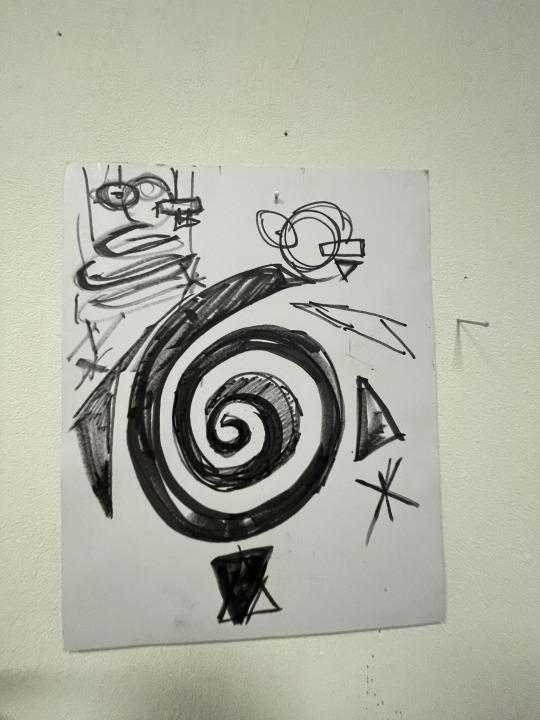

I originally thought this was a promising material- I like the lard scale possible with it, i like the sheen of the metal, the ease it held its shape.

It was only once I started that Idiscovered something terrible, a fundamental flaw with this plan
I Hate Sheet Aluminium.
I have never met a material that I've disliked. Not gotten, sure, but disliked? Not really. But I hate Sheet Aluminium and I think it must be mutual considering how much difficulty and strife it's caused me. Its unwieldily, sharp, and difficult to cut- the shears get in their own way and the strain cramps you arms into an unusable state
With more working and effort I might be able to pull something from this, but for the time being I've pivoted to exploring my shapes in other mediums, namely Hessian.
Good Riddance, I say.
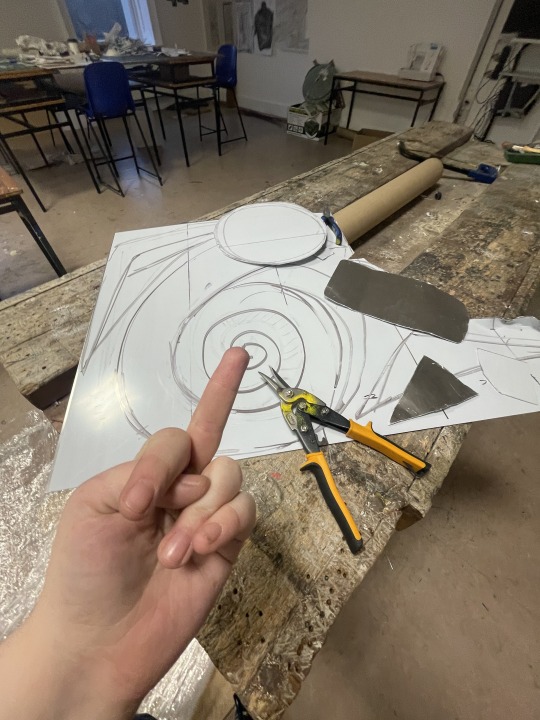
#college project#lsad#k00323703#limerick#first year#movement#sheet metal#all my homies hate sheet metal/aluminium
2 notes
·
View notes
Text
This aluminium ladder is a multi-functional, foldable ladder that is perfectly suited to domestic use. The product complies with the EN131 standard and is a popular and highly sought-after style. The dimensions of the ladder are 4ft by 3ft, which facilitates its storage and transportation. Its robust construction enables it to withstand the effects of regular use, thereby ensuring its reliability as a tool for a range of domestic and occupational tasks. Whether the objective is to access high shelves or undertake repairs in the home, this versatile ladder is an optimal choice. Obtain yours today and experience the convenience and durability of this best-selling model.
Zhejiang Youmay Industrial Co., Ltd. is a large enterprise specializing in the production of aluminum ladders, steel ladders, and fiberglass ladders. Youmay Industry currently covers an area of 40,000 square meters and has a modern standard factory building of 20,000 square meters. It has over 200 employees, more than 10 middle-level managers, and 10 senior engineering and technical personnel. After years of research and growth, Youmay has become a large-scale elevator enterprise that integrates research and development, production, sales, and service.
www.ladderclub.com
2 notes
·
View notes